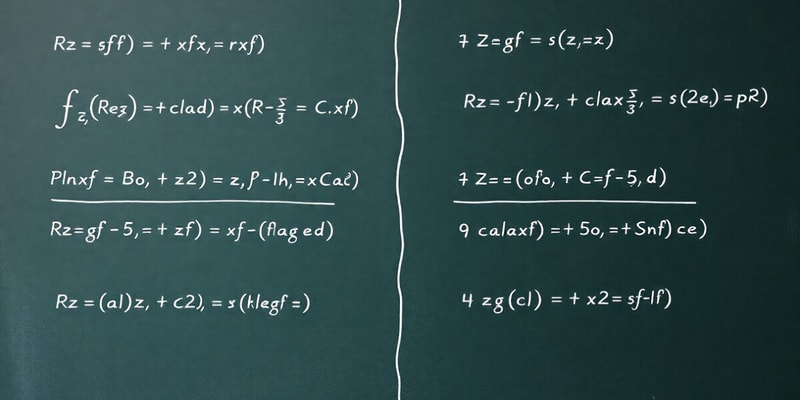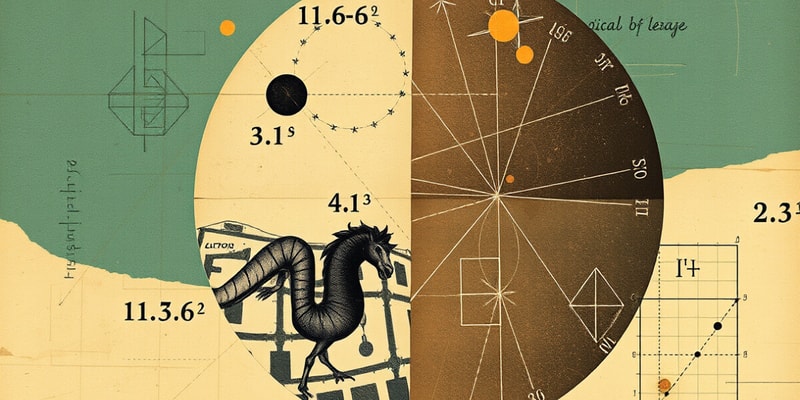Podcast
Questions and Answers
What is the primary principle behind proof by contradiction?
What is the primary principle behind proof by contradiction?
What does the law of excluded middle state?
What does the law of excluded middle state?
What role does resolution play in proof methods?
What role does resolution play in proof methods?
What is a clause in propositional logic?
What is a clause in propositional logic?
Signup and view all the answers
Which programming language is mentioned as an application of resolution in logic programming?
Which programming language is mentioned as an application of resolution in logic programming?
Signup and view all the answers
What must be true for resolution to be applied to two clauses?
What must be true for resolution to be applied to two clauses?
Signup and view all the answers
What does it mean when a proposition is proven true using proof by contradiction?
What does it mean when a proposition is proven true using proof by contradiction?
Signup and view all the answers
Which statement correctly describes the role of resolution in propositional logic?
Which statement correctly describes the role of resolution in propositional logic?
Signup and view all the answers
When is a propositional formula considered a tautology?
When is a propositional formula considered a tautology?
Signup and view all the answers
In the context of the resolution rule, what do C1 and C2 represent?
In the context of the resolution rule, what do C1 and C2 represent?
Signup and view all the answers
What is the prime objective of the resolution technique in propositional logic?
What is the prime objective of the resolution technique in propositional logic?
Signup and view all the answers
What does the resolution technique's algorithm require as the first step?
What does the resolution technique's algorithm require as the first step?
Signup and view all the answers
Study Notes
Proof by Contradiction
- Proof by contradiction involves assuming the proposition to be proven is false and then deriving a contradiction.
- If a contradiction is reached, the assumption that the proposition is false must be incorrect, thus proving the proposition is true.
Law of Excluded Middle
- The law of excluded middle states that for every proposition, either the proposition itself or its negation must be true.
- This principle is fundamental to classical, two-valued propositional logic.
Example: Infinite Prime Numbers
- To prove there are an infinite number of prime numbers, assume there are finitely many primes (𝑝1,..., 𝑝𝑛).
- Construct a new number 𝑝 = 𝑝1 · 𝑝2 ·...· 𝑝𝑛 + 1.
- This number is not divisible by any of the primes 𝑝1,..., 𝑝𝑛.
- It must be a prime number itself, contradicting the original assumption and proving there must be infinitely many primes.
Resolution
- Resolution is a method that automates proof by contradiction and plays a role in automated theorem proving.
Clauses
- A clause is a propositional formula that is a disjunction of literals (variables or their negations).
- A set of clauses can be seen as a formula in conjunctive normal form.
Resolution Rule
- If two clauses share a literal and its negation, a new clause called a resolvent can be formed.
- The resolvent excludes the shared literal and its negation.
Resolution Example: Software Errors
- A software error is in either module 1, 2, or 3.
- If there’s an error in module 2, there’s also an error in module 4.
- Using resolution, it can be concluded that the error must be in module 1, 3, or 4.
Resolution Algorithm (Propositional Logic)
- The algorithm checks whether a propositional formula is a tautology.
- The negation of the formula is converted to conjunctive normal form (CNF).
- The algorithm repeatedly creates resolvents until an empty clause is formed or no new clauses can be derived.
- If an empty clause is created, the negation of the formula is false, which means the formula is a tautology.
Non-Determinism
- The resolution algorithm is non-deterministic because the order of applying the resolution rule is not fixed.
- The algorithm can proceed in different sequences and still lead to the correct result.
Prolog
- Prolog is a programming language using resolution for theorem proving.
- It’s used in expert systems and software verification.
Studying That Suits You
Use AI to generate personalized quizzes and flashcards to suit your learning preferences.
Description
Explore the concepts of proof by contradiction, the law of excluded middle, and their application in logic. This quiz will test your understanding of these foundational principles and their role in mathematical proofs, particularly in demonstrating the infinitude of prime numbers.



